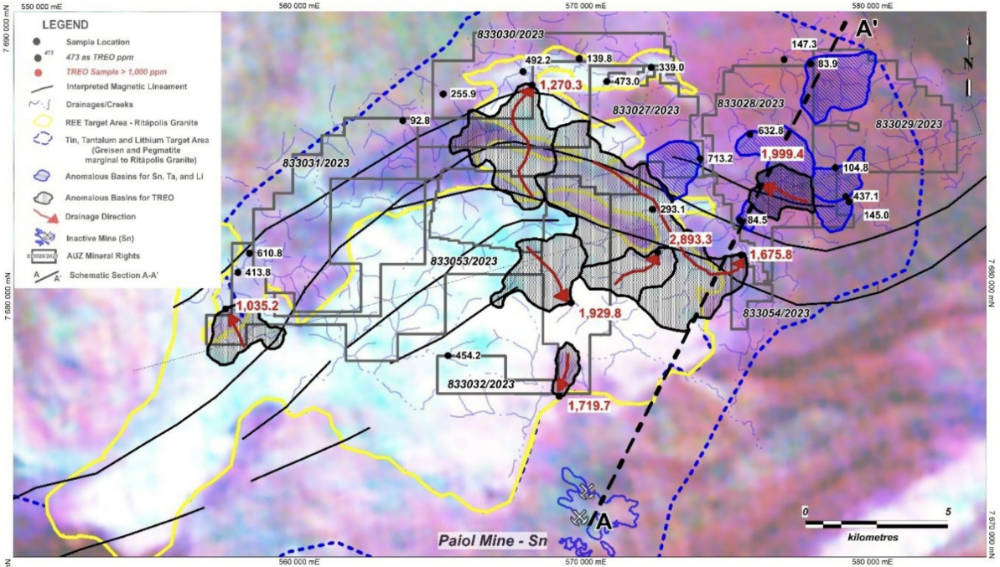Australian Mines finds signs of REEs at Resende lithium project
Mining
Mining
Special Report: Australian Mines has added rare earths to the lithium, tin and tantalum already known to be present at its Resende project in Brazil’s Minas Gerais state following successful stream sediment sampling.
Resende is just 17km east of AMG Lithium’s Mibra spodumene mine – one of the longest-running in the world as it has been in operation since 1945 – within the Sao Joao del Rey pegmatite province.
Australian Mines’ (ASX:AUZ) project consists of eight mineral right claims covering ~133km2 that are believed to contain the eastern extensions of the geological structures and intrusive rocks, responsible for forming the mineralised pegmatites that are currently being mined at Mibra.
The Sao Joao del Rey district itself is characterised by numerous pegmatite bodies of varying mineralogical composition dominated by spodumene but including beryl, tantalitecolumbite and monazite.
Several historically mapped pegmatite and tantalum occurrences have been mapped within the boundaries of the exploration licences but have not been tested or explored for lithium.

While lithium was the original reason why AUZ acquired Resende in December last year, stream sediment sampling has now identified REE anomalies that are proximal to but mostly separate from the drainage basins that are anomalous in lithium, tin and tantalum.
These anomalies returned results of up to 2,893ppm and 1,999ppm total rare earth oxides. Anomalous TREO values (>1,000ppm) were reported from 7 drainage basins covering an area of ~46.5km2.
AUZ noted that the drainage basins are coincident with the Ritapolis Granite, and the anomalous TREO samples are likely to be sourced from the thick in-situ weathering profile developed over this major granite body which is also known to contain the primary REE bearing minerals monazite and xenotime.
Early analysis based on a limited number of stream sediment samples indicates the potential REE assemblage could contain a significant portion of valuable magnet rare earth oxides (MREO) and a favourable heavy REE concentration.
“We are delighted with these new REE results which now opens the possibility of not just tin, tantalum and lithium mineralization at Resende, but potentially also REE mineralisation all within 5-20km of each other. Obviously, the synergies of a positive outcome would add significant value to our shareholders,” AUZ chief executive officer Andrew Nesbitt said.
AUZ has mobilised a team to complete follow-up mapping and sampling with the aim of confirming the source of the TREO anomalism, its size and economic potential.
This will be carried out in parallel with advancing exploration over the contiguous anomalous tin, tantalum and lithium drainage basins.
This article was developed in collaboration with Australian Mines, a Stockhead advertiser at the time of publishing.
This article does not constitute financial product advice. You should consider obtaining independent advice before making any financial decisions.